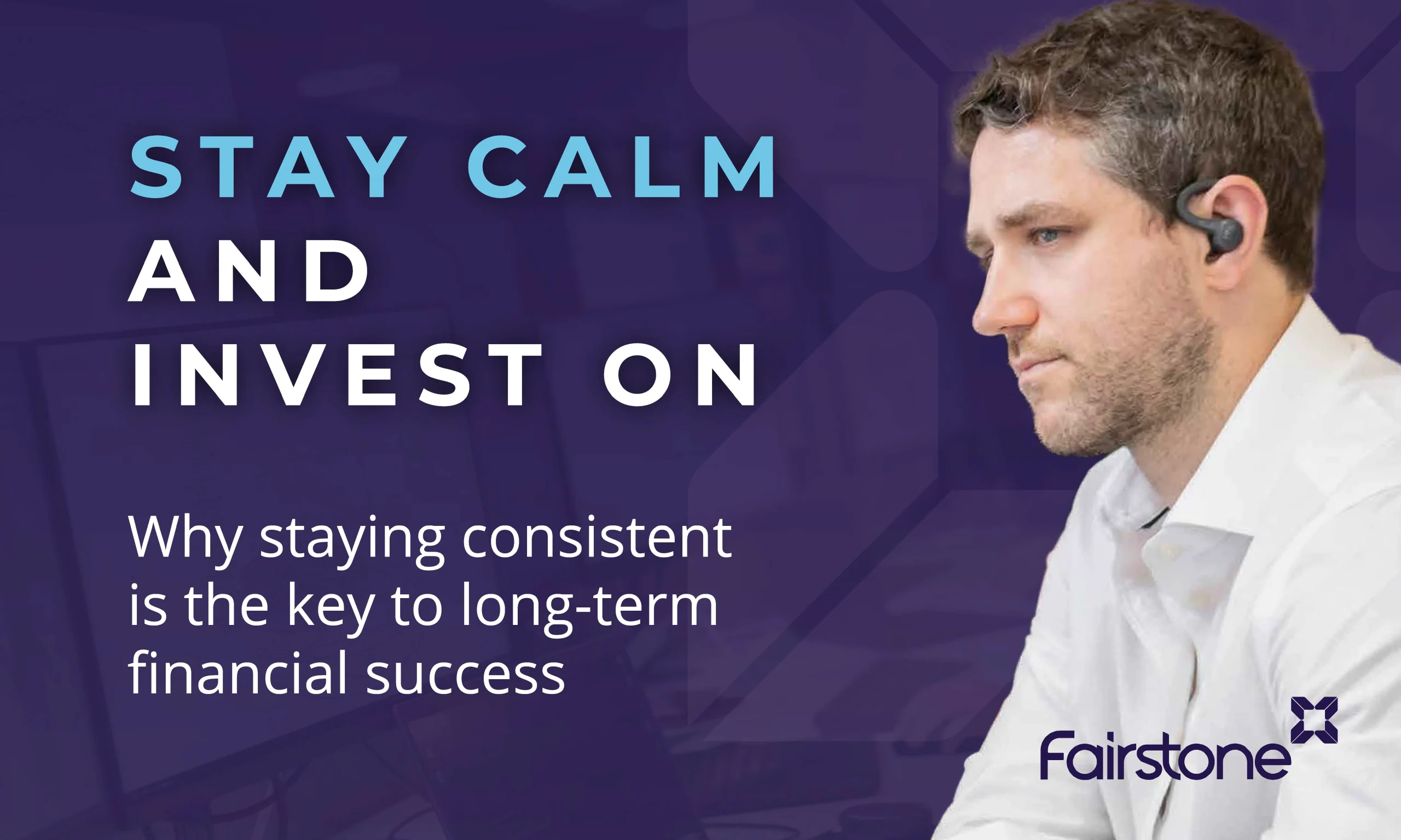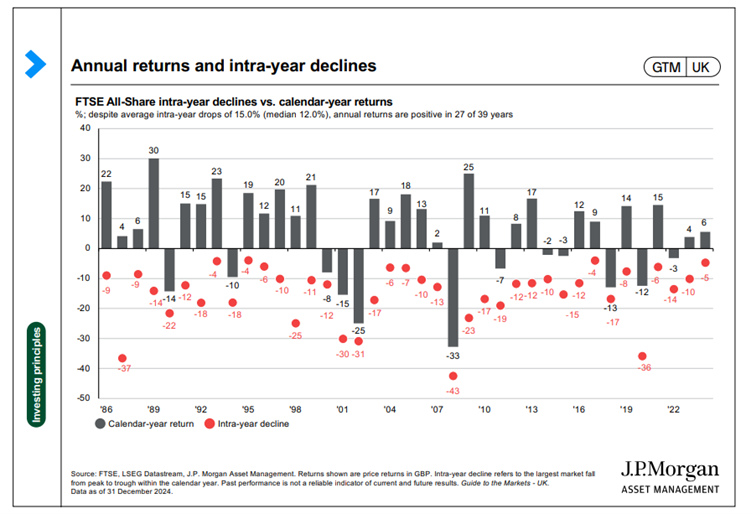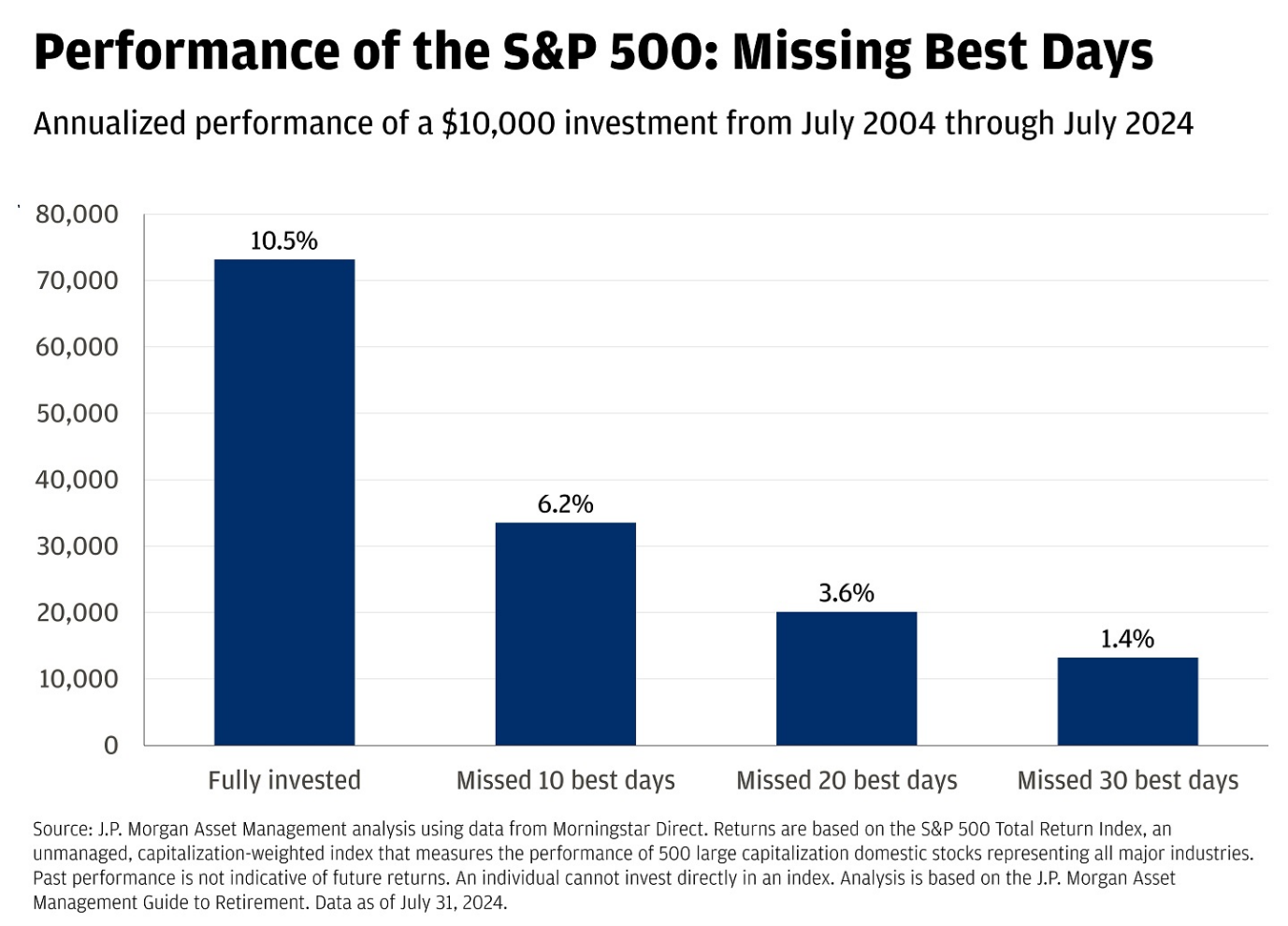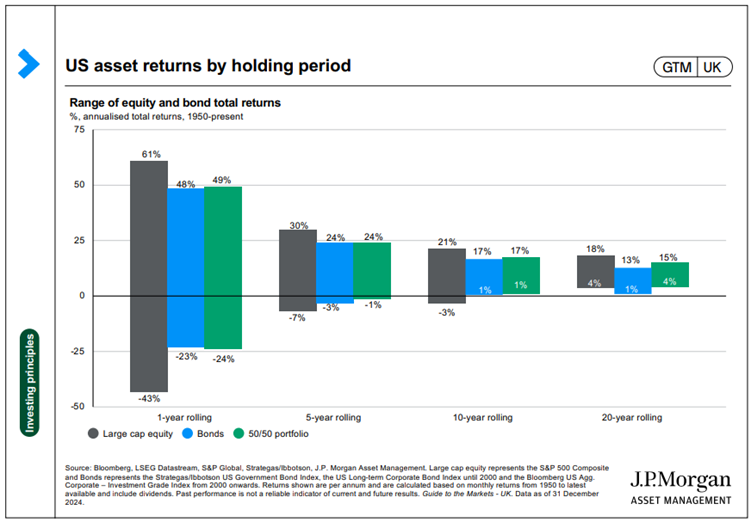
Savings & investment

In a recent move that has heightened global trade tensions, the US administration announced a series of sweeping reciprocal tariffs. In response, China has introduced a 34% blanket tariff on all US imports starting April 10, alongside export restrictions on critical rare earth materials and sanctions targeting key US defence and technology firms.
The purpose of this blog is to help you navigate the recent surge in global trade tensions and understand the long-term impact of these events on your financial strategy. These trade moves could have a ripple effect on markets, impacting everything from stock prices to supply chains, but the key to weathering this uncertainty lies in staying focused on your long-term goals. Remember, the secret to long-term success in investing isn’t about trying to time the market, it’s about time in the market. Despite the noise, sticking to a consistent strategy is what will ultimately drive your success.
Markets can, and do, experience periods of downturns. These moments may feel unsettling, but they’re typically short-lived. The most effective approach is to stay committed to your investment strategy, even when markets are turbulent.
History has consistently shown that drawdowns are entirely normal in any given year, and that markets recover and often bounce back just as sharply as they fall. Trying to time the market by selling in a panic or holding off on new investments until things “settle down” can significantly impact your long-term financial returns.
In the chart below looking at the UK FTSE All-Share index over a near-40 year period, the red dots represent the maximum intra-year equity decline in every calendar year, or the difference between the highest and lowest point reached by the market in those 12 months, while the grey bars represent the full year’s return. While market pullbacks are a normal part of investing, history shows that in most years, markets still finish in positive territory. Double-digit declines may occur, but they’re often followed by strong recoveries. Rather than trying to predict short-term dips, investors should stay focused on long-term goals.

An analysis of stock market returns over a 20-year time period shows the power of remaining invested and not trying to time the market. Using data from the US S&P 500 market, the chart below shows the enormous cost of missing just a handful of the best trading days over the period, which encompasses the global financial crisis, Covid and numerous other notable market events.
If you were to put $10,000 into the S&P 500 in 2004 and stay fully invested through to the middle of 2024, you would have over $70,000. If you missed just the 10 best trading sessions though, you would be left with under $35,000. The reason? Market timing is incredibly difficult. Over the last 20 years, seven of the 10 best days occurred within 15 days of the 10 worst days.
Whilst the chart below illustrates values in US dollars, the same principles apply to pounds sterling. If you were to invest £10,000 in the S&P 500 in 2004 and stay fully invested through to the middle of 2024, you would have over £70,000. However, if you missed just the 10 best trading sessions, you would be left with under £35,000. The reason? Market timing is incredibly difficult. Over the last 20 years, seven of the 10 best days occurred within 15 days of the 10 worst days.

One of the smartest strategies for managing risk is diversification. Spreading your investments across various asset classes, sectors, and global markets. A well-diversified portfolio acts as a cushion during volatile periods, with strong-performing assets often helping to offset areas of your portfolio that are not delivering as strong rewards.
This balanced approach allows investors to ride out market fluctuations while still being positioned for long-term growth.
The evidence is clear: staying invested through the ups and downs of the market leads to stronger outcomes over time. Long-term investing rewards patience, discipline, and consistency. It also allows you to take advantage of powerful benefits such as compounding, tax efficiencies, and the natural rebound of economies.
It’s perfectly reasonable to keep some cash on hand for short-term needs. But for your longer-term goals, whether it’s retirement, buying a home, or leaving a legacy, the best approach is to remain invested in a strategy that aligns with your personal risk profile and objectives.
As this final chart shows, using representative data from US markets that read across directly to UK investors, while markets can always have a bad day, week, month or even a bad year, history suggests investors are much less likely to suffer losses over longer periods. It’s important to keep a long-term perspective. Investors should not necessarily expect the same rates of return in the future as we have seen in the past, but a diversified blend of stocks and bonds has not suffered a negative return over any 10-year rolling period historically, despite the great swings in annual returns we have seen since 1950:

Attempting to predict market movements often leads to missed opportunities. Staying consistently invested allows you to benefit from long-term growth and recovery periods.
Market downturns are inevitable, but history shows they are usually short-lived. Maintaining your investment strategy during turbulent times is more effective than reacting emotionally.
Even missing a few top-performing days can drastically reduce long-term returns. A disciplined, stay-the-course approach typically outperforms panic selling.
A well-diversified portfolio across asset classes, sectors, and regions—mitigates risk and provides stability during market swings.
Sticking with your investment plan through economic cycles harnesses the power of compounding and positions you for greater financial security over time.
If you’re looking to revisit your financial plan or explore new investment opportunities, we’re here to guide you. Our team can offer personalised advice and insights tailored to your unique circumstances, helping you navigate uncertainty with confidence.
THE VALUE OF YOUR INVESTMENTS (AND ANY INCOME FROM THEM) CAN GO DOWN AS WELL AS UP, WHICH WOULD HAVE AN IMPACT ON THE LEVEL OF PENSION BENEFITS AVAILABLE.